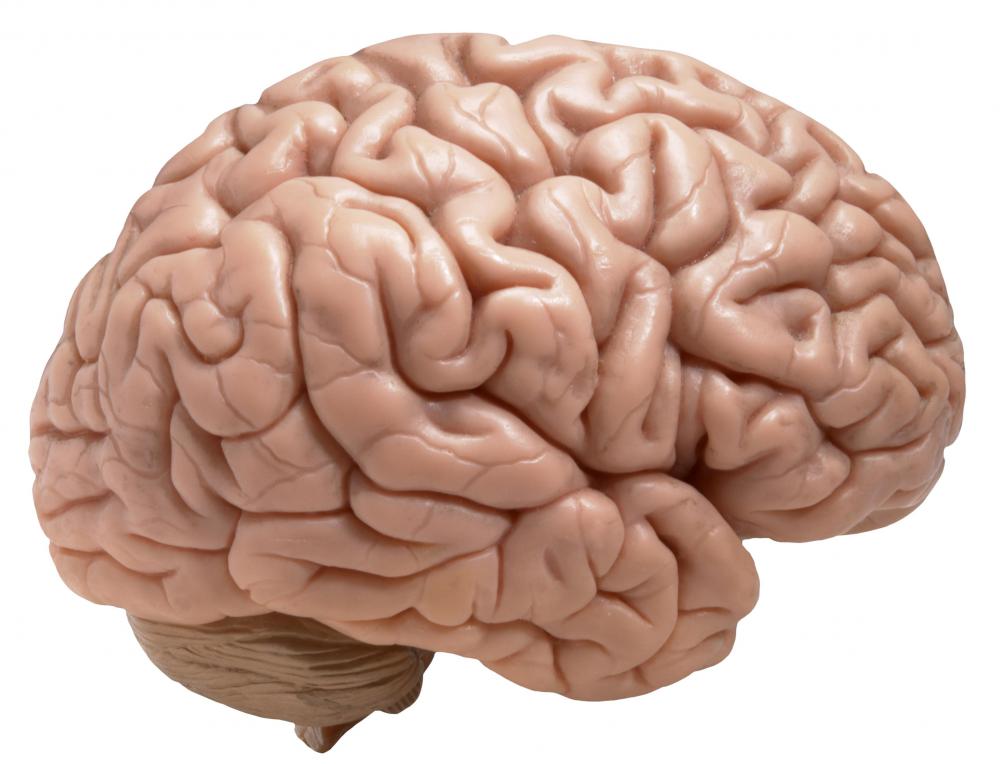At TheHealthBoard, we're committed to delivering accurate, trustworthy information. Our expert-authored content is rigorously fact-checked and sourced from credible authorities. Discover how we uphold the highest standards in providing you with reliable knowledge.
What is Acute Dystonia?
Acute dystonia, also known as an acute dystonic reaction, is a condition that causes involuntarily muscle spasms and a bent or twisted posture. It is generally a side effect of antipsychotic medications which are used in treatment of several different psychiatric disorders, such as schizophrenia and mania associated with bipolar disorder. Acute dystonia is thought to be caused by agents in the medication that block the release of dopamine in the brain.
Primary dystonia is a neurological disorder in which a person suffers from constant muscle spasms. It is thought to be caused by faulty signals from the brain to the muscles. Primary dystonia is genetic and has no cure. An acute dystonic reaction is a temporary, curable version of the disorder and is caused by specific drug use.

The main symptoms of acute dystonia are sudden muscle spasms of the face, neck, back, and limbs after taking antipsychotic medication. It can also cause pain of the neck, jaw, and tongue. In rare cases, a person may have difficulty speaking, abnormal eye twitching or difficulty seeing.
Antipsychotic medications, such as clozapine, risperidone, olanzapine, quetiapine, and ziprasidone manage the symptoms of psychotic disorders but cannot cure them. The medication works by blocking dopamine, a neurotransmitter in the brain that sends signals to the nerve cells. Blocking dopamine can reduce visual and auditory hallucinations and paranoia. The dopamine-blocking agents may interfere with the ability of nerve cells to properly receive brain signals and can cause muscle spasms; however, there is no conclusive proof as to why it happens. Acute dystonia tends to occur when the level of antipsychotic medication in the bloodstream starts to reduce, rather than when it's at higher levels in the blood.

Antiemetic medication, such as metoclopramide, droperidol, and domperidone, may also cause acute dystonia in rare cases. The medication is generally used to treat motion sickness or nausea. Some varieties of the medication may use dopamine-blocking agents to reduce feelings of nausea; however, the condition tends to be more commonly associated with antipsychotic medications.

Acute dystonia can be treated with anticholinergic medications. These medications block acetylcholine, a neurotransmitter responsible for regulating the muscular system. It is generally taken for one to two days after the reaction occurs. The antipsychotic medication that contributed to the reaction may be discontinued or switched out for a lower potency.

Men who take antipsychotic medications are thought to be more likely than women to have an acute dystonic reaction. The reaction is thought to be genetic, so those who have a family history are more likely to experience it. Cocaine use and liver dysfunction can also increase the likelihood of dystonia.
AS FEATURED ON:
AS FEATURED ON:


















Discussion Comments
I have had acute dystonia for a long time. Now my docs say there is no such thing. Why?
This article perpetuates the myth that dystonic reactions are only caused by anti-psychotic drugs. I have had dystonic reactions to Norflex, a muscle relaxer and to Vancomycin and Zyvox, powerful antibiotics administered after a diagnosis of cellulitis following a bi-lateral mastectomy.
Please amend your page to include the fact that other drugs "such as antibiotics" may cause acute dystonic reactions. I had a young resident who was certain I was "extremely paranoid" and insisted I must be taking anti-psychotic drugs, which of course I was not. It make a terrifying experience more stressful and traumatic. Thank you.
Post your comments